Creating a Tuscan garden is about capturing that rustic elegance and tranquil beauty typical of Italy’s sun-soaked landscapes. In this collection of 29+ Tuscan garden ideas, you’ll find inspiration for incorporating lush greenery, fragrant herbs, stone pathways, and charming rustic features that will transport you straight to the heart of Tuscany. Let’s transform your outdoor space into a picturesque retreat that’s as inviting as a warm Italian villa.
Adding Colorful Bougainvillea
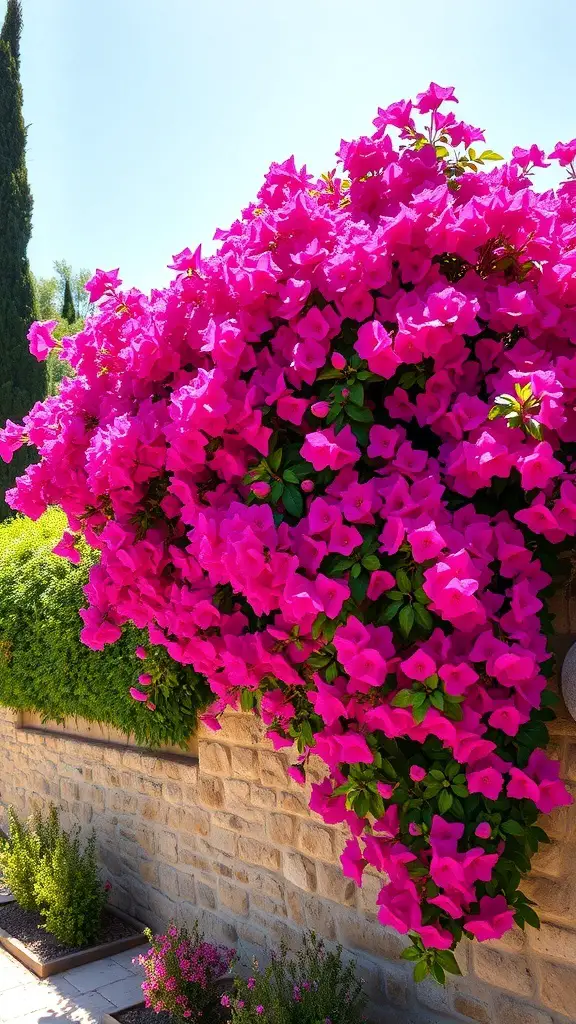
Bougainvillea is a fantastic choice for adding a splash of color to your Tuscan garden. With its vibrant pinks, purples, and reds, this flowering plant can transform any space into a lively retreat. Imagine walking through a garden where these blossoms cascade over walls and trellises, creating a stunning visual effect.
These hardy plants thrive in sunny spots, making them perfect for the warm Tuscan climate. They can be trained to climb or allowed to spill over the edges of pots, giving you flexibility in design. Pairing bougainvillea with terracotta pots or stone walls enhances the rustic charm typical of Tuscan gardens.
Consider planting them alongside herbs or other flowering plants for a delightful contrast. The combination of colors and textures will make your garden feel inviting and cheerful. Bougainvillea is not just beautiful; it’s also low-maintenance, making it ideal for busy gardeners.
Incorporating Rustic Furniture
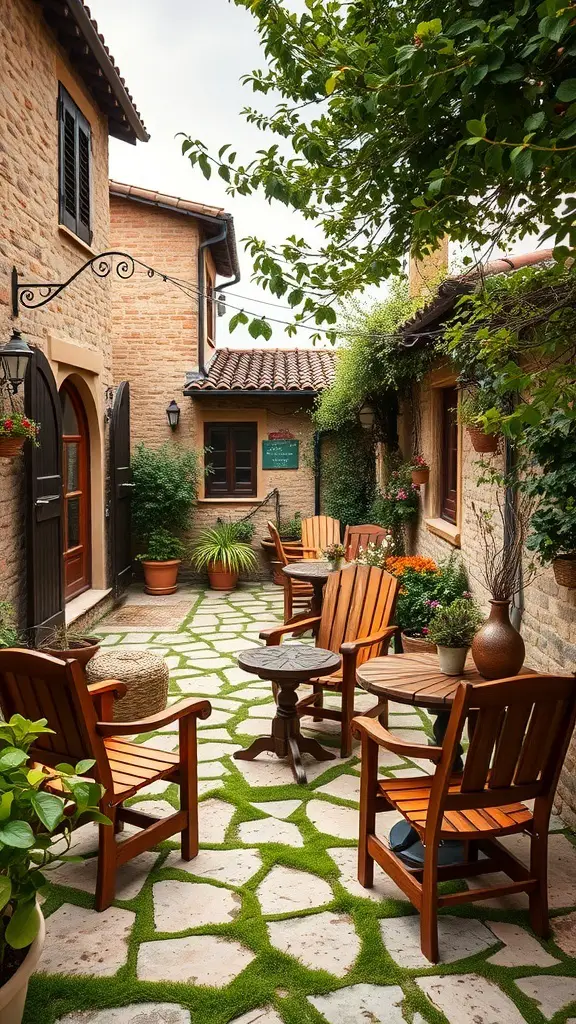
Rustic furniture can bring a warm, inviting feel to your Tuscan garden. Think of sturdy wooden chairs and tables that blend seamlessly with nature. The image shows a cozy outdoor space with wooden seating arranged around small tables, perfect for enjoying a cup of coffee or a meal with friends.
Using natural materials like wood adds character and charm. The rich tones of the furniture contrast beautifully with the stone pathway and lush greenery. This setup encourages relaxation and conversation, making it an ideal spot for gatherings.
Consider adding some cushions for comfort and style. They can introduce color and pattern, enhancing the rustic theme. Potted plants and flowers around the seating area can also create a vibrant atmosphere, making your garden feel alive and welcoming.
Utilizing Olive Trees for Shade
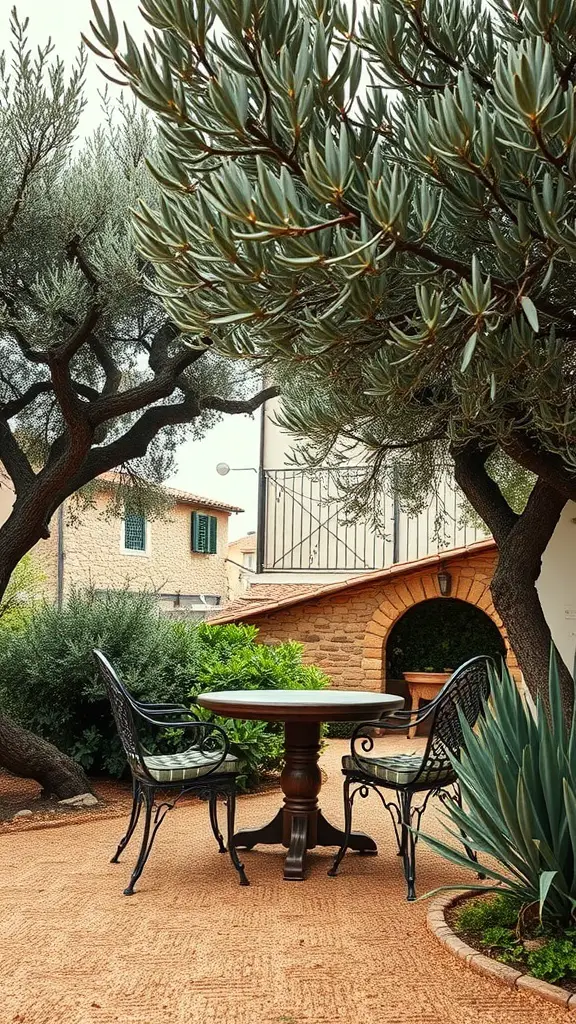
Olive trees are a fantastic choice for creating shade in your Tuscan garden. Their broad canopies provide a cool retreat from the sun, making them perfect for outdoor seating areas. Imagine a cozy table set under the gentle sway of olive branches, where you can enjoy meals or simply relax with a book.
These trees are not just practical; they also add a beautiful Mediterranean touch to your space. Their silvery-green leaves and gnarled trunks create a stunning visual contrast against the vibrant colors of flowers and plants around them. Pairing olive trees with comfortable seating can transform your garden into a welcoming gathering spot.
Consider placing a small round table and chairs beneath the olive trees. This setup invites friends and family to enjoy the outdoors together. You could even add some decorative cushions for extra comfort. The shade from the trees will keep the area cool, allowing you to spend more time outside, even on warm days.
Creating Cozy Seating Areas
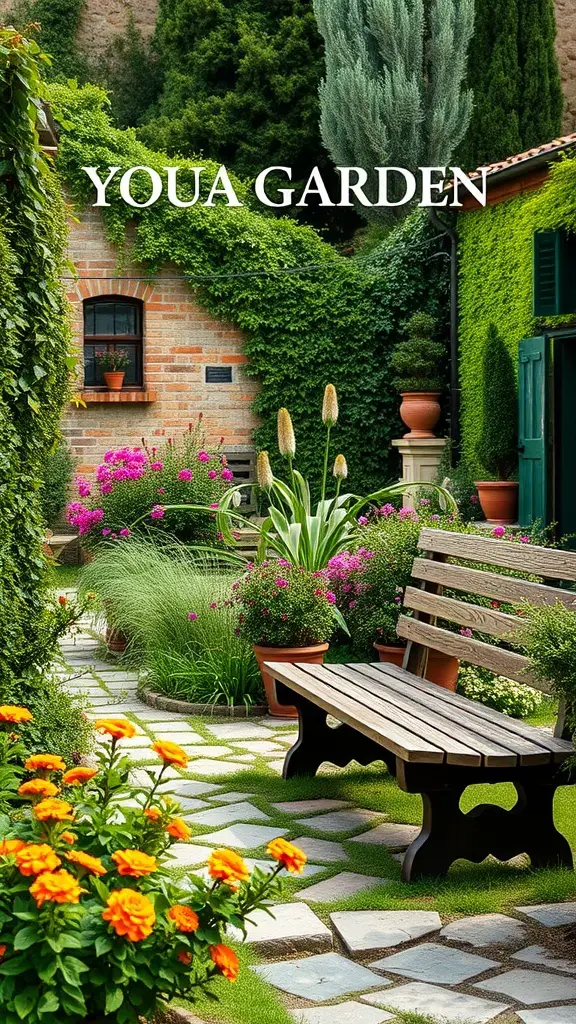
Imagine stepping into a Tuscan garden filled with vibrant flowers and lush greenery. A wooden bench sits invitingly along a stone path, surrounded by colorful blooms. This setting is perfect for creating cozy seating areas where you can relax and enjoy nature.
Start by choosing a comfortable bench or a couple of chairs. Position them near flowering plants to add a splash of color. Use soft cushions to make the seating even cozier. Consider adding a small table for drinks or snacks.
Lighting can enhance the atmosphere. String lights or lanterns can create a warm glow as the sun sets. Don’t forget to incorporate shade options like umbrellas or pergolas, especially for those sunny days.
Lastly, think about adding personal touches. Decorative pillows, a throw blanket, or even a small fire pit can make the space feel like home. These elements will invite you and your guests to linger a little longer in your beautiful garden.
Incorporating Water Features
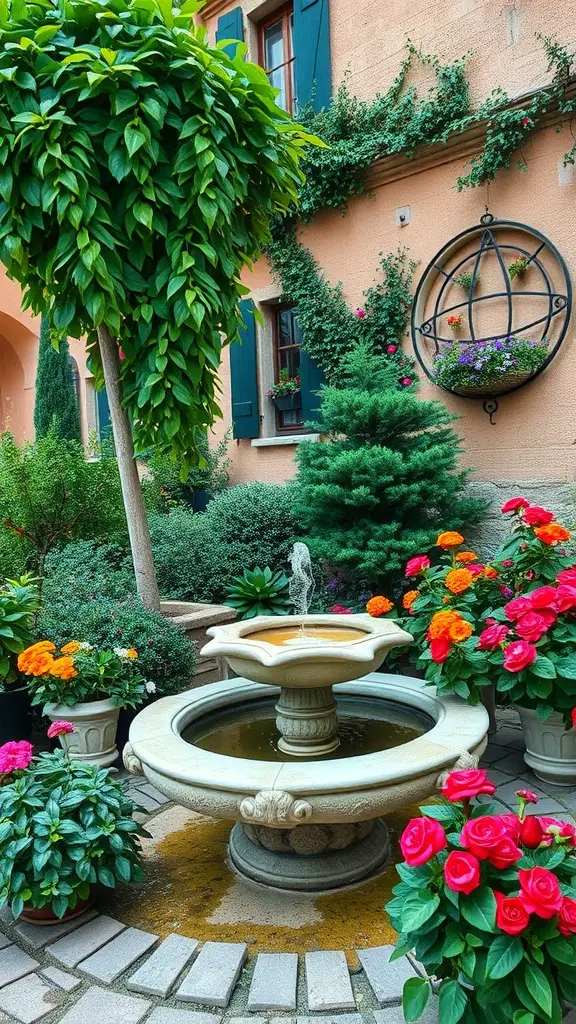
Water features can bring a Tuscan garden to life. A lovely fountain, like the one in the image, serves as a stunning focal point. The gentle sound of flowing water adds a calming touch, perfect for relaxation.
Consider placing your fountain surrounded by vibrant flowers. The mix of colors from the blooms creates a cheerful atmosphere. You can choose plants that thrive in your climate, ensuring a lively garden year-round.
Another idea is to incorporate small ponds or birdbaths. These can attract wildlife, adding more life to your garden. Watching birds splash around can be a delightful experience.
Lighting is also key. Soft lights around the water feature can create a magical evening setting. It’s a great way to enjoy your garden even after sunset.
Using Terracotta Pots for Planting
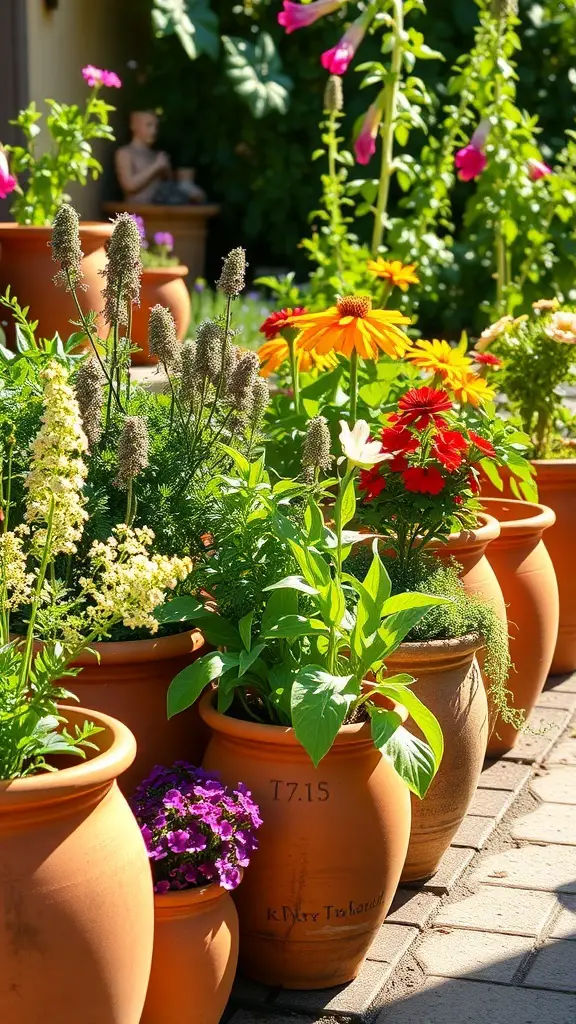
Terracotta pots are a classic choice for any garden, especially in a Tuscan setting. Their warm, earthy tones blend beautifully with vibrant flowers and greenery. These pots are not just pretty; they also offer practical benefits for your plants.
The porous nature of terracotta allows for good air circulation and drainage. This helps prevent overwatering, which is crucial for keeping your plants healthy. You can fill them with a variety of plants, from colorful flowers to fragrant herbs, creating a lively display.
Arranging terracotta pots in different sizes adds depth to your garden. Grouping them together can create a stunning focal point. You can mix and match shapes and heights for a more dynamic look. Adding some decorative stones or gravel around the pots can enhance the overall aesthetic.
Don’t forget to consider the placement of your pots. Positioning them in sunny spots can help sun-loving plants thrive. Alternatively, you can use them to create shaded areas for plants that prefer cooler conditions. With a little creativity, terracotta pots can truly transform your outdoor space.
Creating Vertical Gardens
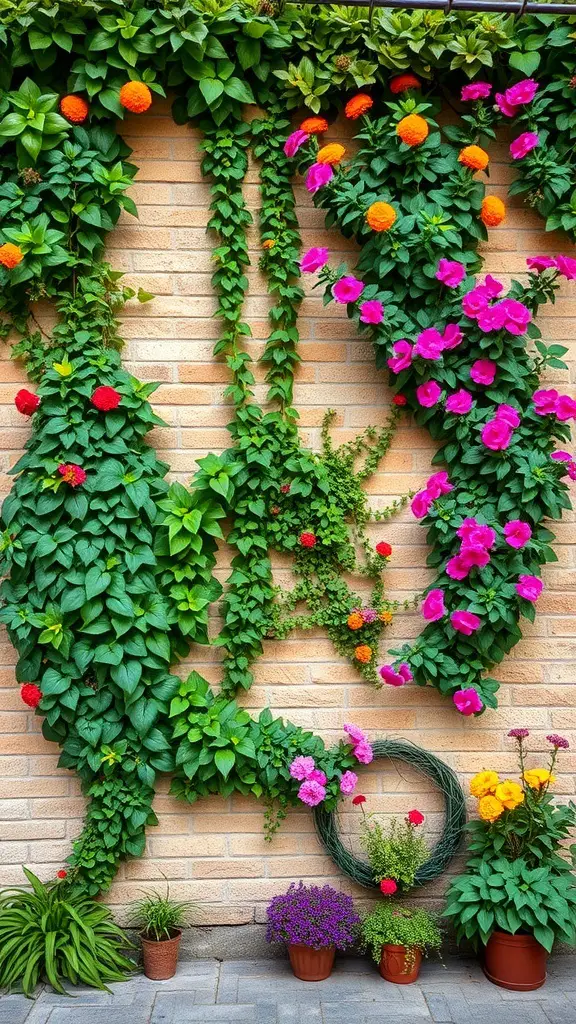
Vertical gardens are a fantastic way to bring life to any space, especially in a Tuscan garden setting. Imagine a wall adorned with vibrant flowers and lush greenery, creating a stunning backdrop.
This image showcases a beautiful arrangement of climbing plants and colorful blooms. The mix of greens and bright flowers adds a cheerful touch, making it perfect for any garden enthusiast.
To start your own vertical garden, consider using a trellis or wall-mounted planters. Choose plants that thrive in your climate and can climb or cascade down. Herbs, succulents, and flowering vines work wonderfully.
Don’t forget to incorporate different textures and colors for visual interest. You can even add decorative elements like hanging pots or a rustic wreath to enhance the charm of your vertical garden.
Designing Pathways with Natural Stone
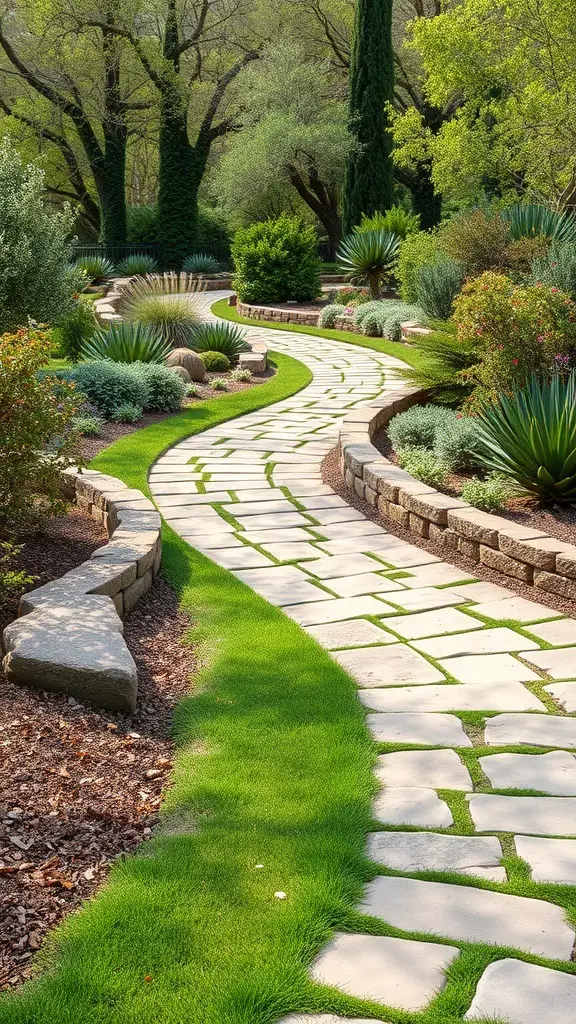
Creating pathways in your garden can add charm and functionality. Using natural stone is a fantastic way to achieve this. The image shows a beautifully curved pathway made of large stone slabs, surrounded by lush greenery and vibrant plants.
Consider the shape of your pathway. A winding path, like the one in the image, invites exploration and adds a relaxed feel to the garden. You can use stones of varying sizes to create a unique look. This not only enhances visual interest but also helps with drainage.
Surrounding the pathway with low-maintenance plants can soften the edges. Think about using drought-resistant plants that thrive in your climate. This will keep your garden looking fresh without too much effort.
Incorporate seating areas along the path. A bench or a small table can create a cozy nook for relaxation. This makes your garden a perfect spot for enjoying a cup of coffee or reading a book.
Lighting is another important aspect. Adding solar lights along the pathway can make it inviting in the evening. It also enhances safety, guiding guests through your garden.
Incorporating Lighting for Ambiance
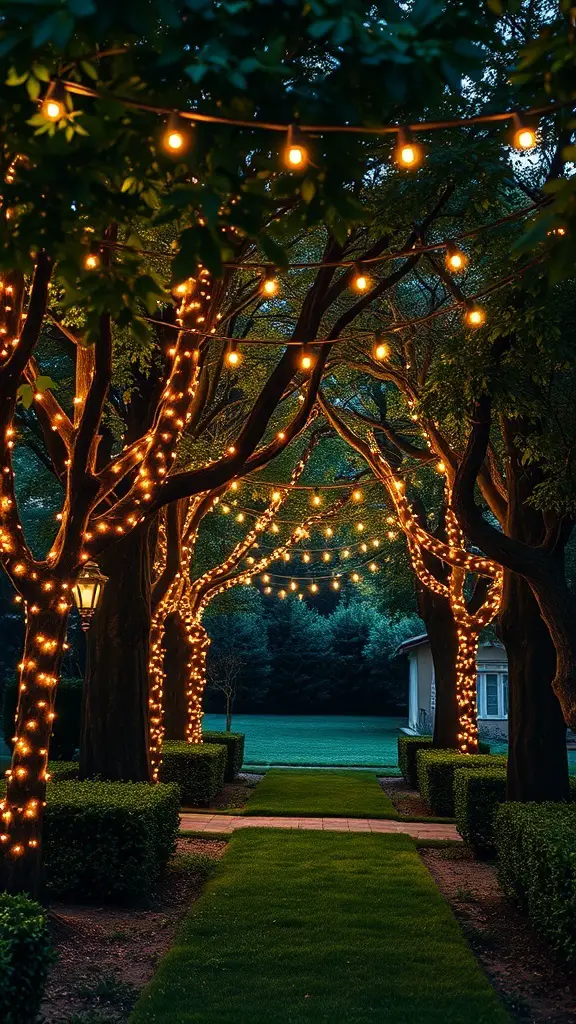
Lighting plays a big role in creating a cozy atmosphere in your Tuscan garden. String lights draped through trees can add a magical touch, making the space feel inviting and warm.
Consider using lanterns along pathways to guide guests while adding charm. These can be placed at intervals to create a soft glow that enhances the garden’s natural beauty.
For a more intimate setting, think about placing candles on tables or in nooks. This adds a romantic vibe, perfect for evening gatherings.
Don’t forget about highlighting specific features, like sculptures or water features, with spotlights. This draws attention to the beauty of your garden, even after the sun sets.
Incorporating Garden Arbors

Garden arbors are a charming addition to any outdoor space, especially in a Tuscan garden. They create a focal point and add vertical interest. Imagine walking through an archway covered in lush greenery, leading you to a serene garden area.
In the image, you can see a beautifully crafted wooden arbor adorned with climbing plants. This not only provides shade but also enhances the overall aesthetic. The soft light filtering through the leaves creates a warm and inviting atmosphere.
Consider placing an arbor at the entrance of your garden or along a pathway. You can train vines or flowers to grow over it, adding color and texture. This can also serve as a perfect spot for seating or a small table, making it a cozy nook for relaxation.
For added charm, think about incorporating lanterns or fairy lights to illuminate the arbor in the evening. This will create a magical ambiance, perfect for gatherings or quiet evenings outside.
Creating Outdoor Dining Spaces

Imagine enjoying a meal surrounded by lush greenery and vibrant flowers. An outdoor dining space can make every meal feel special. A table set with elegant dishes, glasses of wine, and fresh fruit creates a welcoming atmosphere.
Consider using natural elements like wood and stone for your dining furniture. This adds a rustic charm that fits perfectly in a Tuscan garden. A simple tablecloth can elevate the look, making it feel more inviting.
Lighting is key for evening meals. Lanterns or string lights can create a cozy vibe. Position your dining area near beautiful views, like a garden path or a charming doorway, to enhance the experience.
Don’t forget about comfort. Add cushions to your chairs for a relaxed feel. Think about the layout too; ensure there’s enough space for movement and conversation.
Using Stone Walls for Structure
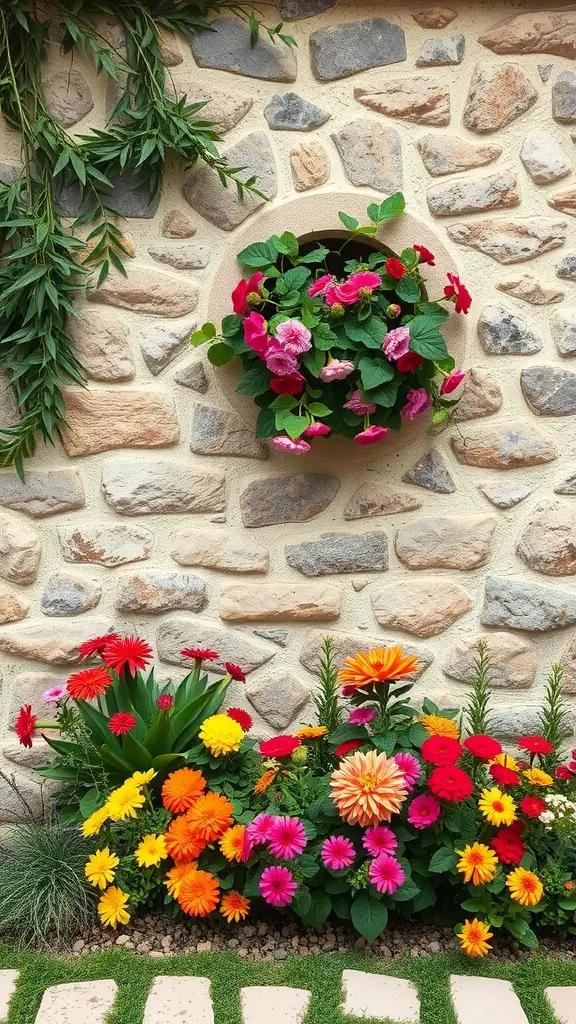
Stone walls bring a rustic charm to any garden, especially in a Tuscan setting. They provide a solid backdrop that enhances the beauty of surrounding plants. The texture of the stones contrasts beautifully with the vibrant colors of flowers.
In the image, you can see a lovely arrangement of flowers at the base of a stone wall. This setup creates a warm and inviting atmosphere. The flowers in various shades of red, orange, and pink pop against the earthy tones of the stone, making the garden feel lively.
Consider using stone walls to define spaces in your garden. They can serve as borders for flower beds or pathways. You can also incorporate planters into the walls for a unique touch. Hanging planters, like the one shown, add vertical interest and maximize space.
Mixing stone walls with greenery can create a stunning visual effect. Climbing plants or trailing vines can soften the hard edges of the stone, adding a touch of nature. This combination not only looks great but also provides a sense of privacy.
Designing with Mediterranean Plants
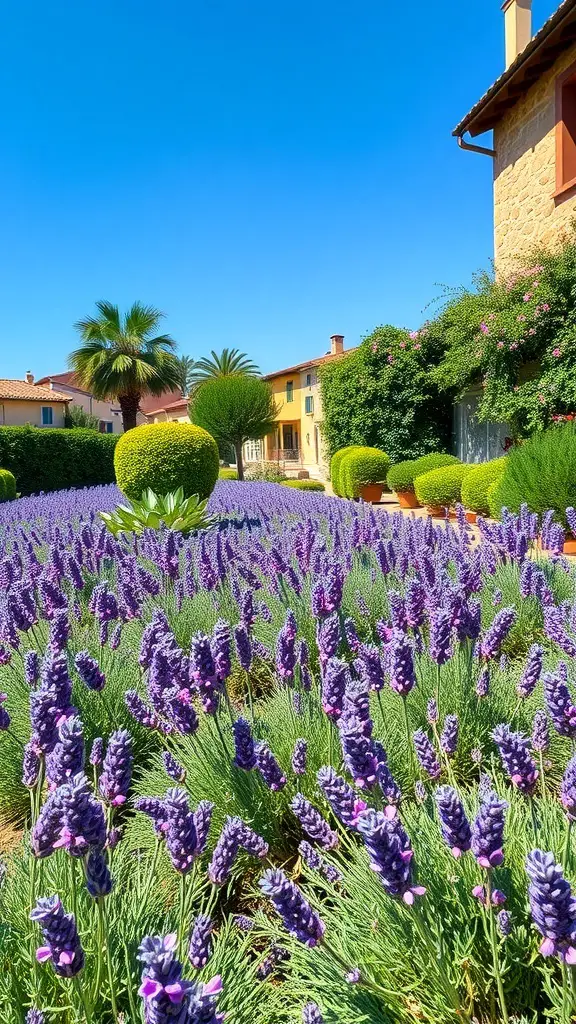
Creating a Tuscan garden is all about embracing the beauty of Mediterranean plants. The image showcases vibrant lavender, a staple in many Tuscan landscapes. Its rich purple hue adds a pop of color and a delightful fragrance to any garden.
Consider using lavender as a border plant. It not only looks stunning but also attracts pollinators like bees and butterflies. Pair it with other Mediterranean favorites like rosemary and sage for a fragrant herb garden.
Incorporating palms and succulents can also enhance the Mediterranean vibe. They thrive in sunny spots and require minimal water, making them perfect for a low-maintenance garden.
Don’t forget about the hardscaping! Stone pathways and terracotta pots can add rustic charm. These elements blend beautifully with the lush greenery and colorful blooms.
Planting Seasonal Flowers for Variety

Tuscan gardens are known for their stunning displays of color and life. Planting seasonal flowers is a great way to keep your garden vibrant throughout the year. Imagine walking through a garden filled with bright blooms, each season bringing a new palette of colors.
In spring, consider planting tulips and daffodils. These flowers bring a cheerful start to the gardening season. As summer rolls in, zinnias and sunflowers can take center stage, adding warmth and brightness. Fall can be adorned with chrysanthemums and asters, while winter can feature evergreens and winter-blooming plants.
Mixing different types of flowers not only enhances beauty but also attracts various pollinators. This diversity creates a lively atmosphere, perfect for enjoying the outdoors. Don’t forget to think about the arrangement; layering taller plants behind shorter ones can create depth and interest.
With careful planning, your Tuscan garden can be a year-round showcase of seasonal flowers. Embrace the changing seasons and let your garden tell a story through its blooms!
Creating Herb Gardens
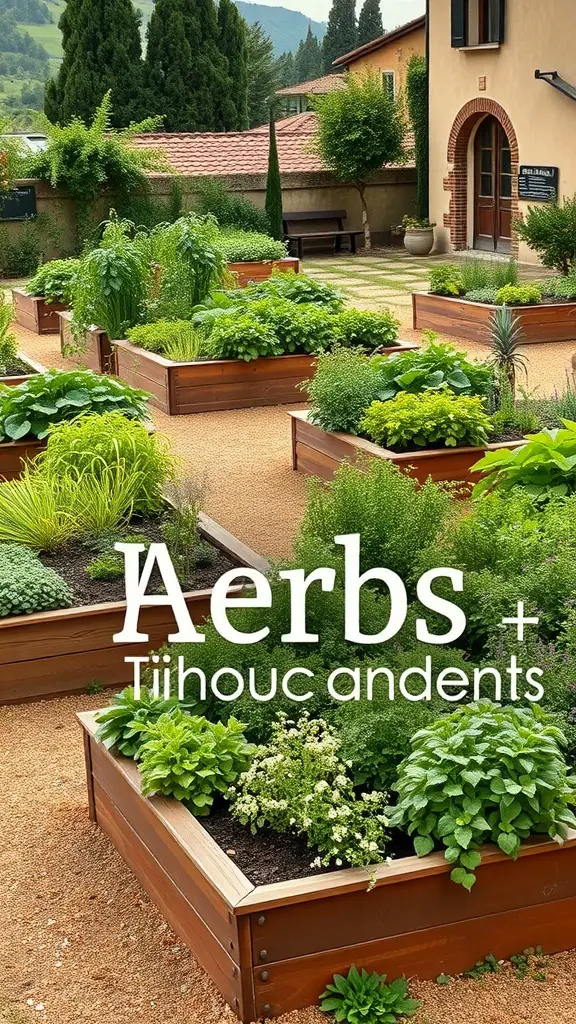
Herb gardens are a wonderful addition to any outdoor space, especially in a Tuscan setting. Imagine raised beds filled with fresh basil, parsley, and mint, all thriving in the warm sun. These gardens not only look beautiful but also provide fresh ingredients for your kitchen.
Using wooden planters can add a rustic charm. They create a neat and organized look, making it easy to tend to your herbs. You can mix different herbs together or keep them separated for easy access.
Consider placing your herb garden near a patio or kitchen door. This way, you can quickly grab what you need while cooking. Adding a few decorative stones or gravel paths can enhance the garden’s appeal and make it easier to walk through.
Don’t forget to think about sunlight and water. Most herbs love sunshine, so choose a spot that gets plenty of light. Regular watering is key, especially during hot months. With a little care, your herb garden can flourish and bring joy to your cooking.




